Fix: One or More Network Protocols are Missing on this Computer
One or more network protocols are missing on this computer error only occurs while trying to troubleshoot the network, and Windows socket entries required for network connectivity are corrupted or missing.
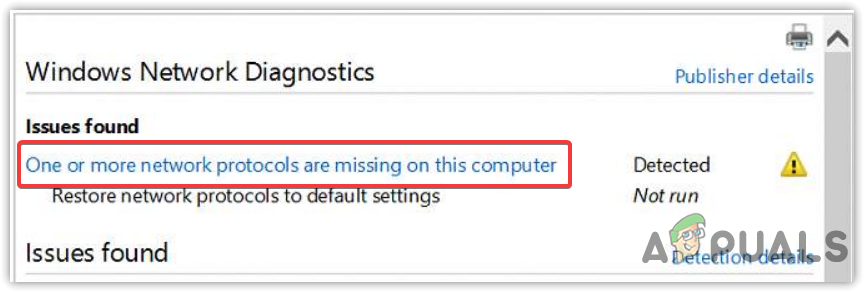
Below we have outlined some of the factors causing this error:
- Enabled IPv6- IPv6 is the next version of the internet protocol version 4. The affected users have reported and confirmed that IPv6 is the reason for this error in many scenarios.
- Corrupted Network Drivers- If you have a network driver with corrupted files or components, your network won’t be able to function properly and will introduce many connectivity and stability issues unless you reinstall the network driver.
- Misconfigured Network configuration- Proper network configurations are required for a stable internet connection. You will be prone to this error if the network configurations are misconfigured due to a human error or any third-party application.
- 802.11b+g+n is set as Wireless Mode- Your network router’s wireless mode determines which devices can connect to the WAP for the best stability and connectivity possible. Several users have fixed this error by changing their wireless mode to 802.11g.
1. Reset Winstock
Winstock is a programming application that allows other network applications to access network services. Sometimes, the Windows Network API can get corrupted, which can cause this error. Therefore, try resetting Winstock by following the steps below:-
- Click Start Menu or press Win Key, type Command Prompt
- Right-click the terminal and choose Run As Administrator
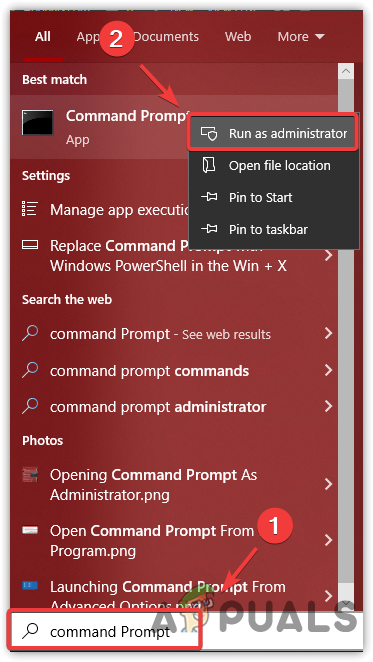
Running Command Prompt In Administrator Mode - Copy the below command and paste it into the terminal
netsh winsock reset
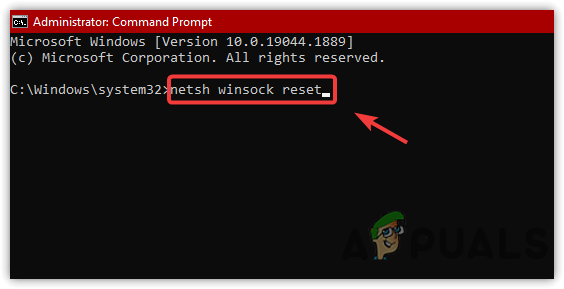
Resetting Winstock - Hit Enter and restart the computer to check if the issue is fixed.
2. Disable IPv6
IPv6 is a new internet protocol from Microsoft that was introduced to improve performance by handling the packets more efficiently. In many scenarios, IPv6 performs better than IPv4. However, you are more prone to this issue when using IPv6. Therefore, try disabling the IPv6 by following the steps mentioned below:
- Launch Settings and navigate to Network & Internet
- Scroll down to the bottom, click on Change Adapter Options
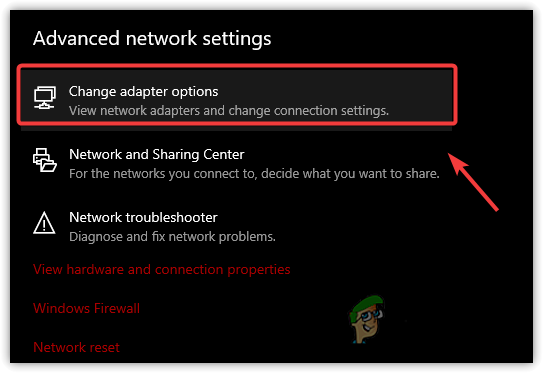
Click Change Adapter Settings - Right-click the current adapter and click Properties
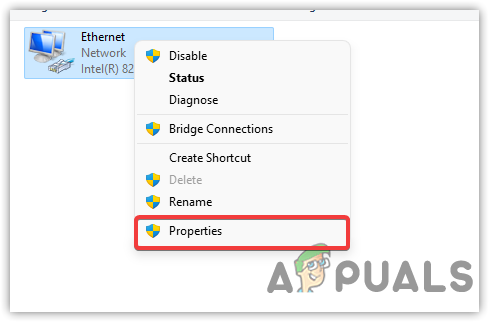
Click Properties - Uncheck Internet Protocol Version 6 (TCP/IPv6)
- Then, click OK
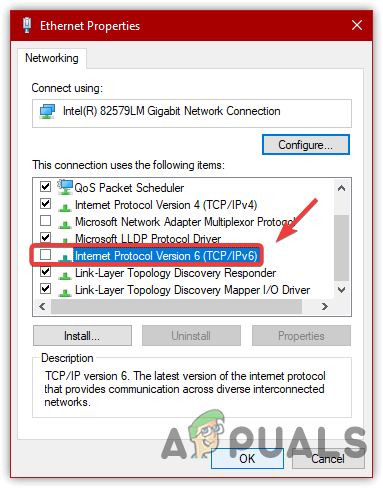
Disabling IPv6 - Once done, check if the issue is fixed.
3. Enable Adapter
If, for some reason, your adapter has been disabled by a third-party application or accidentally by you, your internet won’t work, and it can trigger this error. You can fix this error by enabling the network adapter. Follow the instructions below to do so:
- Press the Win key and type Control Panel
- Go to Network & Internet and click Network and Sharing Center
- Click Change Adapter Settings
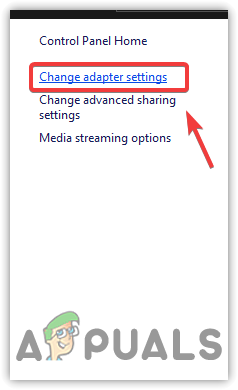
Navigate to Adapter Settings - Right-click the current network adapter
- Click Disable and then click Enable
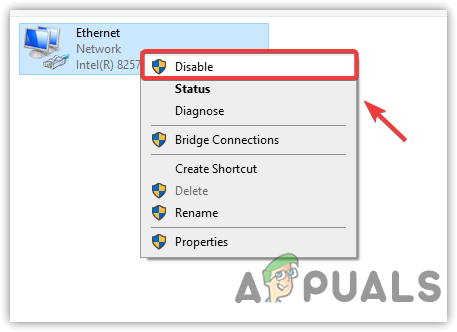
Disabling and Enabling Network Adapter - Once done, check if the error is fixed.
4. Reinstall TCP/IP
TCP or Transmission Control Protocol/Internet Protocol delivers data when the IP address is found. If the issue persists due to a problem with TCP/IP, reinstalling the TCP/IP will fix this issue. Follow the steps:
- Launch Control Panel and follow the below path
Control Panel\Network and Internet\Network and Sharing Center
- Click Change Adapter Settings
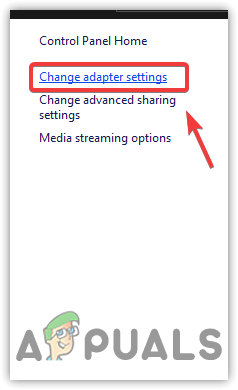
Go to Adapter Settings - Right-click the adapter and click Properties
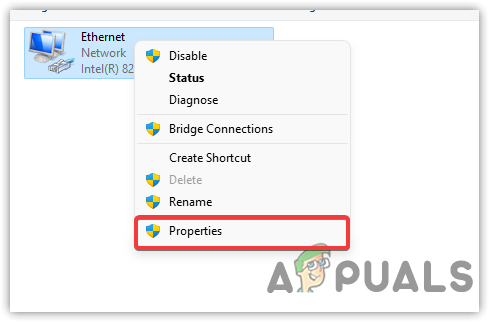
- Click Install, then select Protocol, then click Add
- Click Have Disk, then click Browse
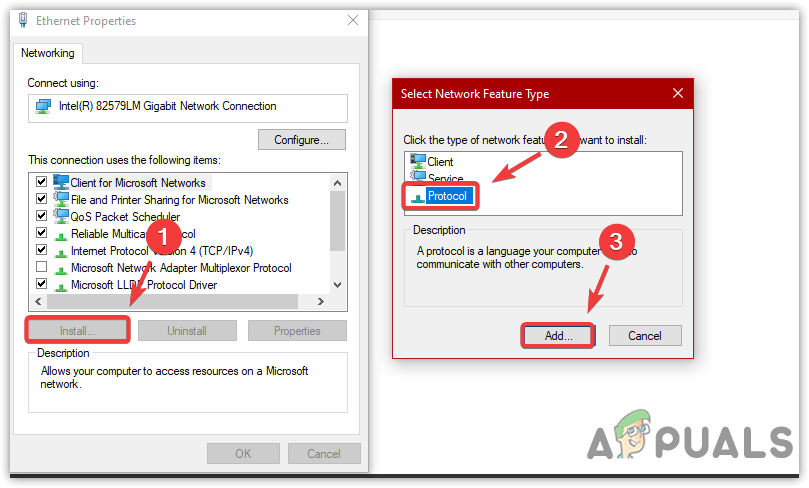
Adding a New Protocol - Navigate to the following path
C:\Windows\INF
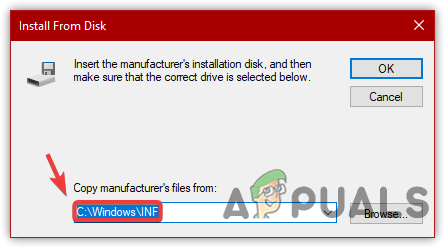
Selecting Directory - Once done, click OK
- Select Internet Protocol (TCP/IP) – Tunnels
- Then, click OK
- If you receive an error similar Could Not Add The requested Feature
- Then, follow one more step:-
- Launch the Run Window by pressing the Win + R
- Type Regedit and click OK
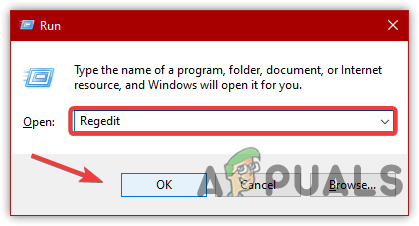
Opening Registry Editor - Follow the below directory
HKEY_LOCAL_MACHINE\SOFTWARE\Policies\Microsoft\Windows\safer\codeidentifiers\0\Paths
- On the right pane, right-click the Paths and click Delete
- Once done, do the same method and check if it fixes the issue.
5. Reset Network Settings Via Command Prompt
Misconfigured Network settings can often produce this error. A properly configured network connection provides more stability than the misconfigured settings like DNS and Proxy. First, ensure you do not have any bad proxy settings enabled, as it can disconnect you from the internet and will cause this error.
You can also reset the network settings by following the steps composed in this article.
- To reset Network Settings, type Command Prompt from Start Menu
- Right-click the terminal and choose Run As Administrator
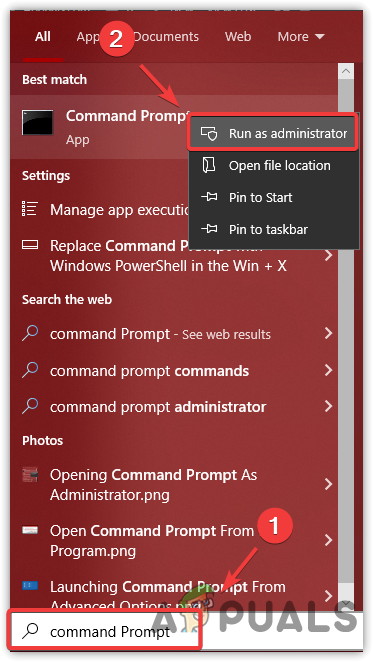
Opening Command Prompt In Administrator Mode - Paste the following commands one by one and press Enter
ipconfig /flushdns ipconfig /registerdns ipconfig /release ipconfig /renew netsh winsock reset catalog netsh int ipv4 reset reset.log netsh int ipv6 reset reset.log pause shutdown /r
- Once done, check if the issue is fixed.
6. Re-install Network Driver
The error is often produced due to corrupted and defective driver files, as they play the leading role in providing a stable and uninterrupted internet connection. To avoid this, try reinstalling the network driver as mentioned below:
- Right-click the Start Menu and click Device Manager
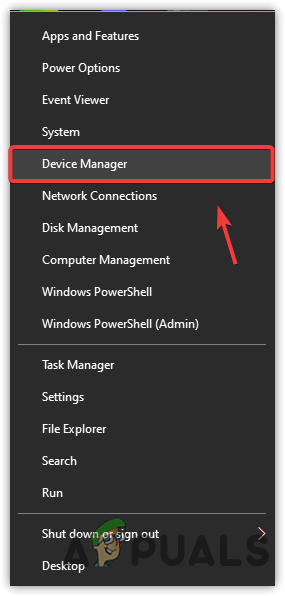
Opening Device Manager - Open Device Manager and right-click the current network adapter
- Click Uninstall Device, then restart your computer to install the network driver
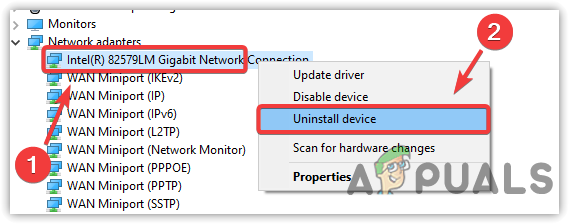
Uninstalling Network Driver - Once done, check if the error is resolved.
7. Uninstall Third-Party Antivirus
Some users have claimed that they have encountered this error while using third-party-antivirus software. Hence, if you use any third-party antivirus software, try disabling or uninstalling it to see if the error persists. If that does not work, try disabling Windows defender. Below are the steps:
- Click Start Menu and type appwiz.cpl
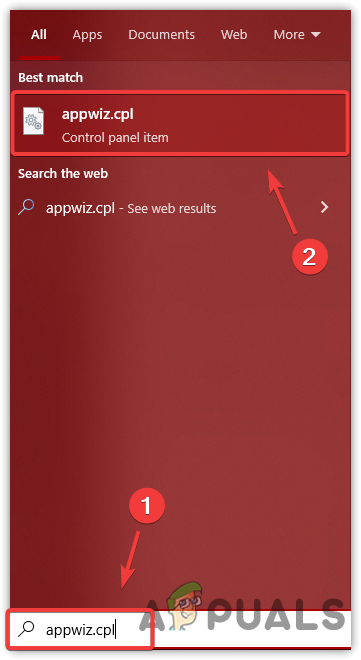
Go to Programs & Features - Hit Enter to open Control Panel Programs & Features
- Right-click the Antivirus and click Uninstall
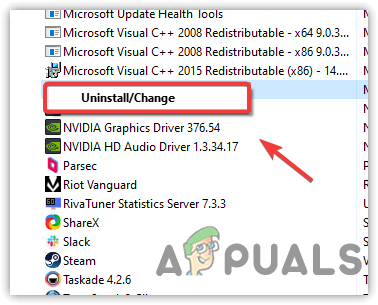
Uninstalling Third-Party Antivirus - Once done, check if the issue persists.
8. Change Wireless Mode to 802.11g
There is an option for changing wireless mode to 802.11g in router settings, which supports WLAN among computers and other devices. It is similar to 802.11b+g+n, selected by default for most routers. According to some users, changing the wireless mode to 802.11g has fixed their issue. Here are the steps:
- Launch Browser and type your router IP address, which is used to login into the administrator panel
Note: If you don’t know the router’s IP address, execute the ipconfig in the command prompt to copy Default Gateway. Once done, paste it into the browser. - Locate Wireless Mode or Mode and change it to 802.11g, or else
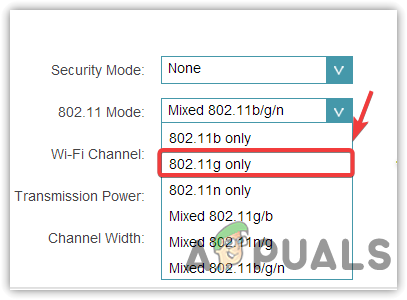
Changing Wireless Mode - Click Save and check if the error persists.